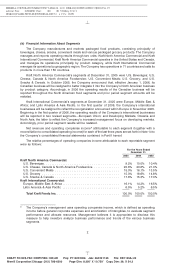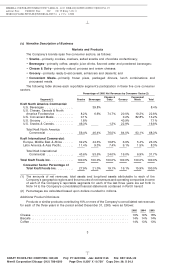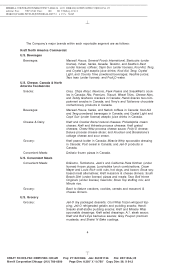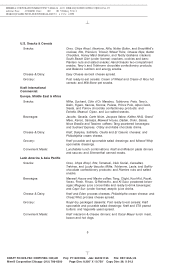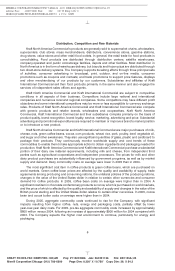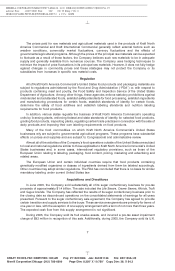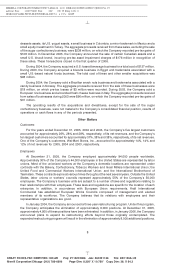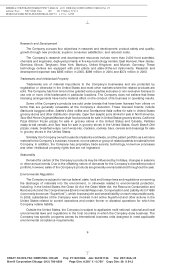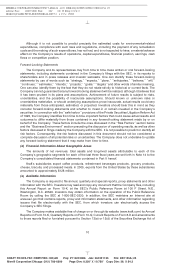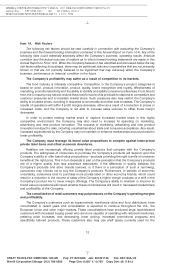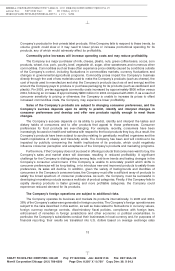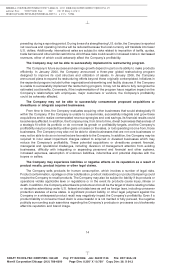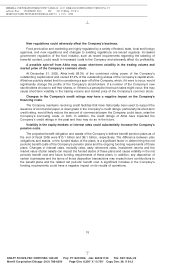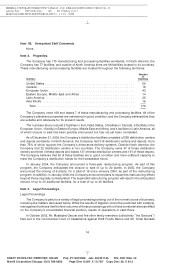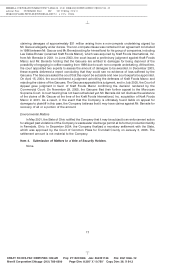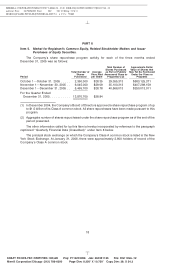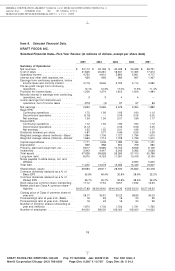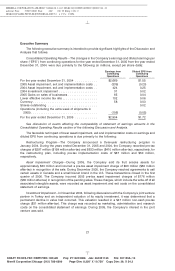Kraft 2005 Annual Report Download - page 13
Download and view the complete annual report
Please find page 13 of the 2005 Kraft annual report below. You can navigate through the pages in the report by either clicking on the pages listed below, or by using the keyword search tool below to find specific information within the annual report.
MERRILL CORPORATION MBLOUNT// 9-MAR-06 14:03 DISK126:[06CHI5.06CHI1135]DE1135A.;25
mrll.fmt Free: 50D*/120D Foot: 0D/ 0D VJ RSeq: 12 Clr: 0
DISK024:[PAGER.PSTYLES]UNIVERSAL.BST;51
KRAFT FOODS-FSC CERTIFIED-10K/AR Proj: P1102CHI06 Job: 06CHI1135 File: DE1135A.;25
Merrill Corporation/Chicago (312) 786-6300 Page Dim: 8.250 X 10.750Copy Dim: 38. X 54.3
Item 1A. Risk Factors
The following risk factors should be read carefully in connection with evaluating the Company’s
business and the forward-looking information contained in this Annual Report on Form 10-K. Any of the
following risks could materially adversely affect the Company’s business, operating results, financial
condition and the actual outcome of matters as to which forward-looking statements are made in this
Annual Report on Form 10-K. While the Company believes it has identified and discussed below the key
risk factors affecting its business, there may be additional risks and uncertainties that are not presently
known or that are not currently believed to be significant that may adversely affect the Company’s
business, performance or financial condition in the future.
The Company’s profitability may suffer as a result of competition in its markets.
The food industry is intensely competitive. Competition in the Company’s product categories is
based on price, product innovation, product quality, brand recognition and loyalty, effectiveness of
marketing, promotional activity and the ability to identify and satisfy consumer preferences. From time to
time, the Company may need to reduce the prices for some of its products to respond to competitive and
customer pressures and to maintain market share. Such pressures also may restrict the Company’s
ability to increase prices, including in response to commodity and other cost increases. The Company’s
results of operations will suffer if profit margins decrease, either as a result of a reduction in prices or
increased costs, and the Company is not able to increase sales volumes to offset those margin
decreases.
In order to protect existing market share or capture increased market share in this highly
competitive environment, the Company may also need to increase its spending on marketing,
advertising and new product innovation. The success of marketing, advertising and new product
innovation is subject to risks, including uncertainties about trade and consumer acceptance. As a result,
increased expenditures by the Company may not maintain or enhance market share and could result in
lower profitability.
The Company must leverage its brand value propositions to compete against lower-priced
private label items and offset economic downturns.
Retailers are increasingly offering private label products that compete with the Company’s
products. The willingness of consumers to purchase the Company’s products will depend upon the
Company’s ability to offer brand value propositions—products providing the right bundle of consumer
benefits at the right price. This in turn depends in part on the perception that the Company’s products
are of a higher quality than less expensive alternatives. If the difference in quality between the
Company’s products and store brands narrows, or if there is a perception of such a narrowing,
consumers may choose not to buy the Company’s products. Furthermore, in periods of economic
uncertainty, consumers tend to purchase more private label or other economy brands, which could
result in a reduction in the volume of sales of the Company’s higher margin products or a shift in the
Company’s product mix to lower margin offerings. The Company’s ability to maintain or improve its
brand value propositions will impact whether these circumstances will result in decreased market share
and profitability of the Company.
The consolidation of retail customers may put pressures on the Company’s operating margins
and profitability.
The Company’s customers such as supermarkets, warehouse clubs and food distributors, have
consolidated in recent years and consolidation is expected to continue throughout the U.S., the
European Union and other major markets. These consolidations have produced large, sophisticated
customers with increased buying power who are more capable of operating with reduced inventories,
resisting price increases, and demanding lower pricing, increased promotional programs and
specifically tailored products. These customers also may use shelf space currently used for the
12
6 C Cs: 5952


